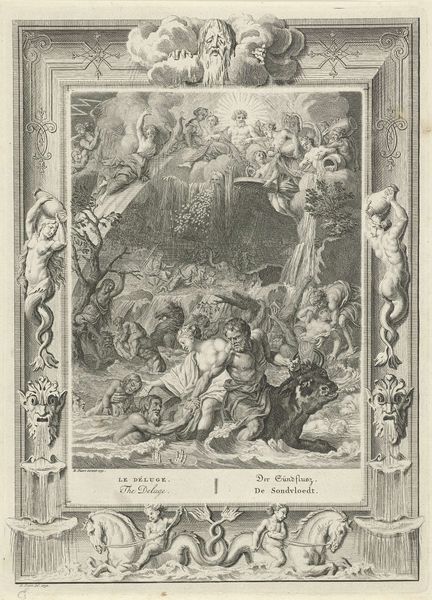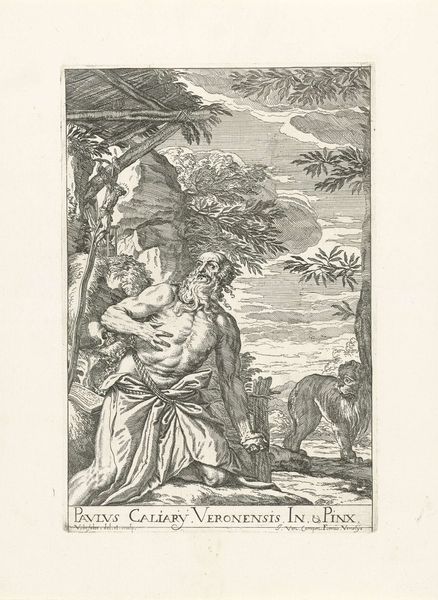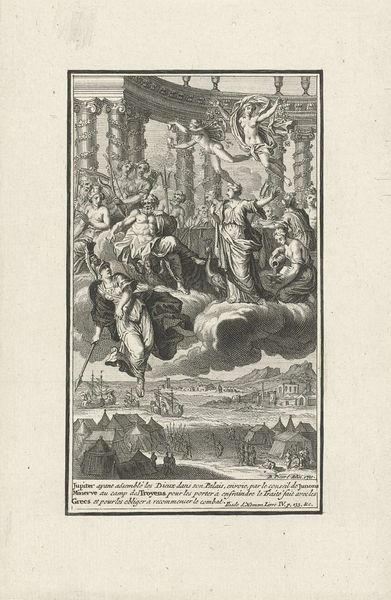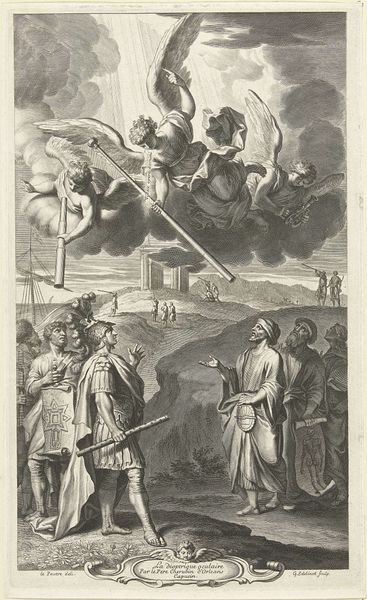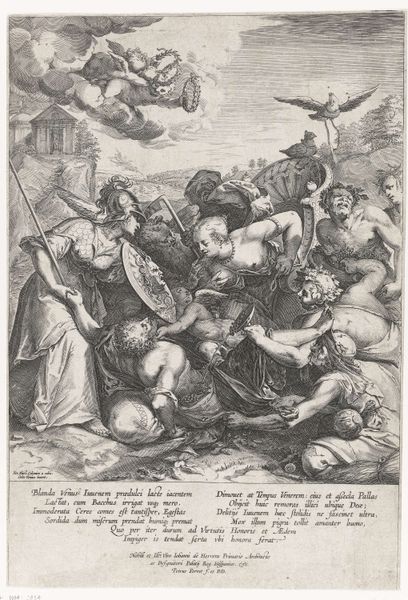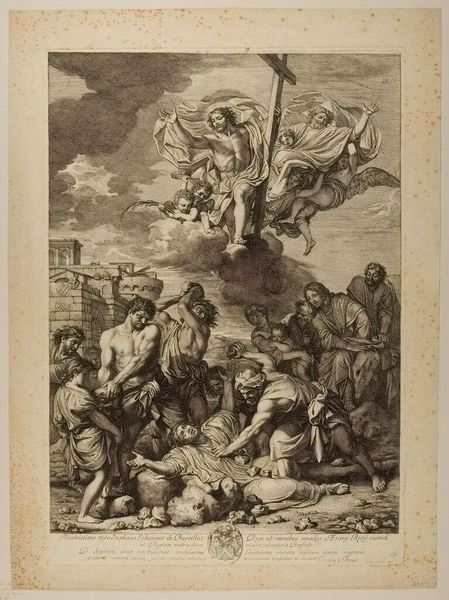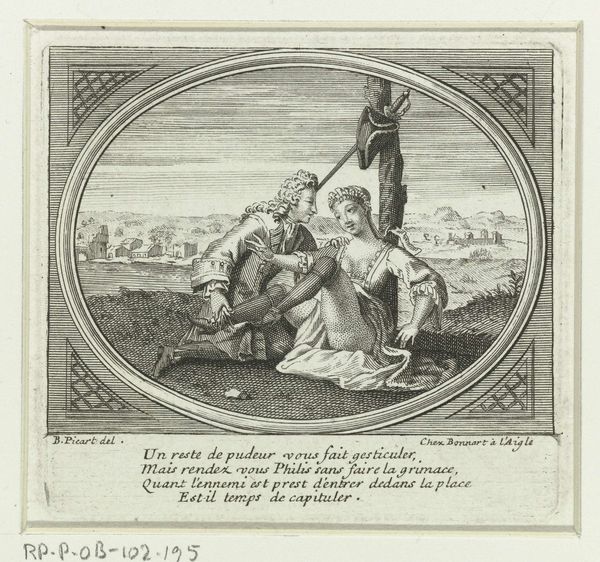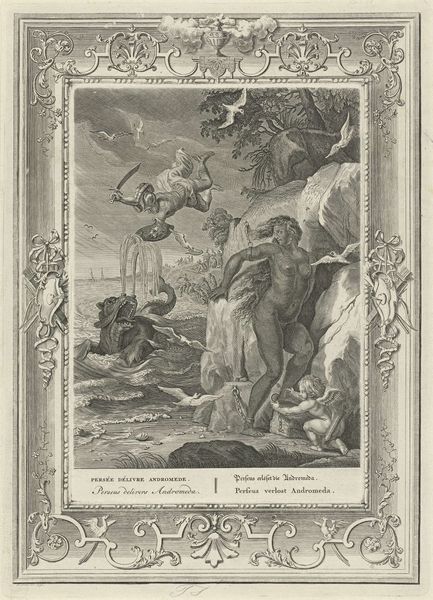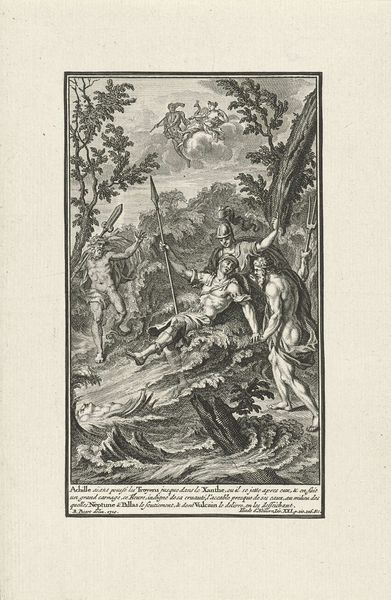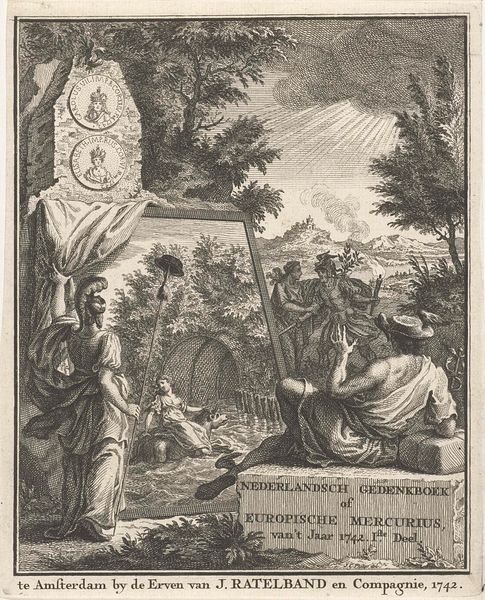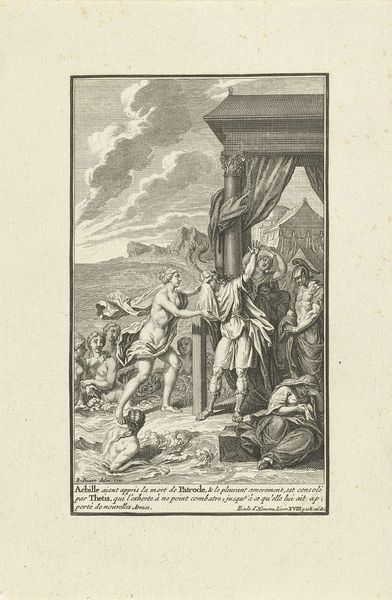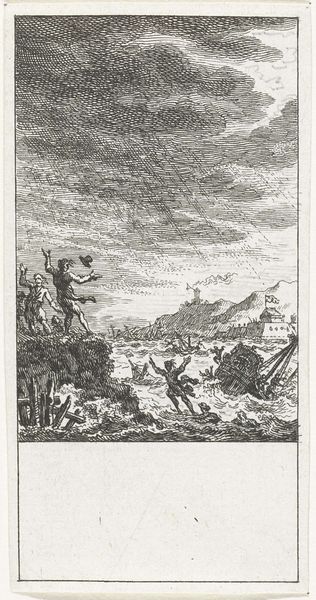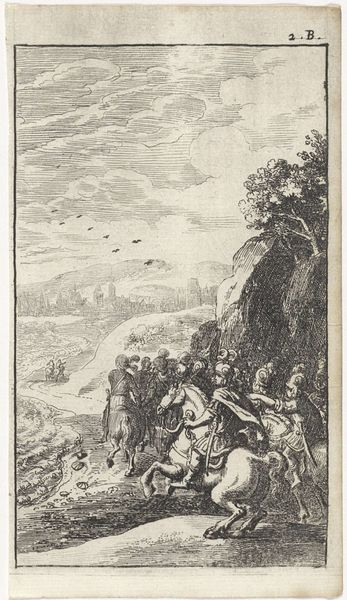
engraving
#
baroque
#
old engraving style
#
landscape
#
figuration
#
mythology
#
history-painting
#
nude
#
engraving
Dimensions: height 250 mm, width 177 mm, height 355 mm, width 256 mm
Copyright: Rijks Museum: Open Domain
Editor: This is "Deucalion and Pyrrha create a new race of people," an engraving by Bernard Picart from 1731, currently at the Rijksmuseum. It’s interesting how he captures such a dramatic myth with delicate lines. What do you make of it? Curator: Well, for starters, isn't it fascinating how a story of near total annihilation can lead to rebirth? Pictart really nails the dramatic sweep. The figures feel like they are emerging from a nightmare and stepping hesitantly into dawn. Those nude figures could have been from the Golden Age of Venetian paintings! Editor: Definitely! It almost seems like Picart is mixing stark despair with optimism. The light and shadow definitely lead you to see new hope from despair. Do you think Picart had any message for the people back then? Curator: I believe so! Back in 1731, people yearned for better things, yet Europe seemed stuck with the aristocracy. So it seemed people then also were eager to make something better, just as these mythological characters made humans from stones. Now, what about that ornate border? Does that speak to you in any way? Editor: Oh, yes. It really emphasizes the engraving itself, as if to elevate this particular view of the myth. And somehow, it transforms what would be a landscape into something much more profound! Curator: Exactly! This border invites viewers to imagine all kinds of scenarios, as if each little embellishment holds a different secret. What did we learn? Mythology can bring forth creative storytelling even when times were tough. Editor: I'm going to think twice the next time I pass by an engraving! It truly encapsulates so much cultural meaning within such carefully constructed lines.
Comments
No comments
Be the first to comment and join the conversation on the ultimate creative platform.
